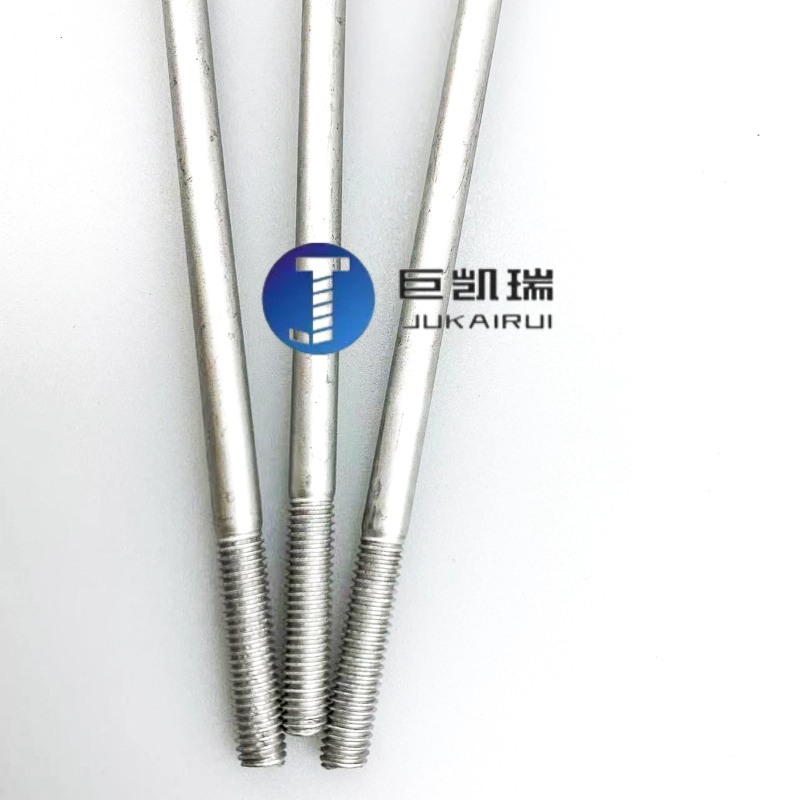Release time:2020-01-16 18:44 Browse:

In daily life and various DIY projects, the assembly of extension screws is a basic and important skill. Whether it is home repair, furniture assembly, or more complex mechanical equipment installation, mastering the correct assembly method can not only improve work efficiency, but also ensure that the structure is stable and extend the service life. Below, we will explore in detail how to assemble extension screws, including selecting the right screw model, securing threaded parts, ensuring that the screw is fully embedded, and each key step of fastening the nut.
First, choose the appropriate screw model
The first and crucial step before assembly is to select the right screw model. The selection of screws should be comprehensively considered according to many factors such as application scenarios, material strength, required pressure and environmental conditions.
Understand the application scenario: Determine what the screw will be used for, whether it is interior decoration, outdoor installation, or load-bearing structure? Different environments have different requirements for corrosion resistance and strength of screws.
Matching material: The material of the screw and the connected part should be matched to avoid electrochemical corrosion or strength mismatch caused by material differences.
Determine the specification: According to the size of the aperture, the required length and the type of thread (such as coarse teeth, fine teeth) select the appropriate screw specification. The length of the extension screw is particularly important to ensure that there is sufficient length to tighten the nut after penetrating the connected piece.
Second, fix the threaded parts
Before assembly, ensure that all threaded parts (such as nuts, washers, etc.) are ready, and check that the surface is clean and free of damage. Next, place the two or more parts that need to be connected according to the design requirements to prepare for the next screw installation.
Clean the surface: Use a clean cloth or detergent to wipe the threaded parts and connecting surfaces to remove oil and impurities to ensure good contact and fastening effect.
Prepositioning: Use a temporary clamp or marker pen to mark the pre-installation position of the screw on the part to ensure accurate installation.
3. Ensure that the screw is fully embedded
When starting to install the screw, use the appropriate tool (such as a screwdriver, wrench, or electric screwdriver) to slowly screw the screw into the threaded hole of the first connected piece. Special attention should be paid to the following points in this process:
Uniform force: Keep the rotation force even, avoid excessive force resulting in screw damage or screw bending.
Step by step: With the deepening of the screw, timely adjust the Angle and strength to ensure that the screw goes straight forward and does not deviate from the predetermined position.
Check alignment: When the screw is about to penetrate the first connected piece, pause the installation and check that all parts are still aligned to avoid misalignment.
4. Tighten nuts
When the screw is fully embedded and penetrates all the connected parts, the nut can be tightened. This step is key to ensuring a strong connection.
Choose the right tool: Depending on the size and type of nuts, choose the right wrench or power tool to tighten.
Pre-tightening force: When tightening for the first time, apply the appropriate pre-tightening force to generate a certain friction between the connected parts and improve the reliability of the connection.
Cross-fastening: If multiple screws are involved, cross-fastening should be used, that is, the screws on the diagonal are initially tightened, and then checked and adjusted one by one to ensure uniform force.
Check the tightness: After the fastening is complete, use tools such as a torque wrench to check whether the tightness meets the requirements to avoid damage or loosening of the thread, which may lead to safety risks.
Additional advice
Use of locking agent: In special environments, such as large vibration occasions, you can consider applying an appropriate amount of locking agent at the thread to enhance the stability of the connection.
Regular inspection: For equipment or structures used for a long time, the fastening state of the screws should be regularly checked, and the loosening problem should be found and dealt with in time.
Safe operation: During the entire assembly process, be sure to follow the safe operation procedures and wear the necessary protective equipment to avoid injury.
With the careful operation of the above steps, you can successfully assemble a solid and reliable extension screw connection. Whether it is a small home repair or a professional engineering installation, mastering this skill will make your work more convenient.
# Lengthening screws # Lengthening bolts # Lengthening outer hex screws # Lengthening inner hex screws # fasteners

